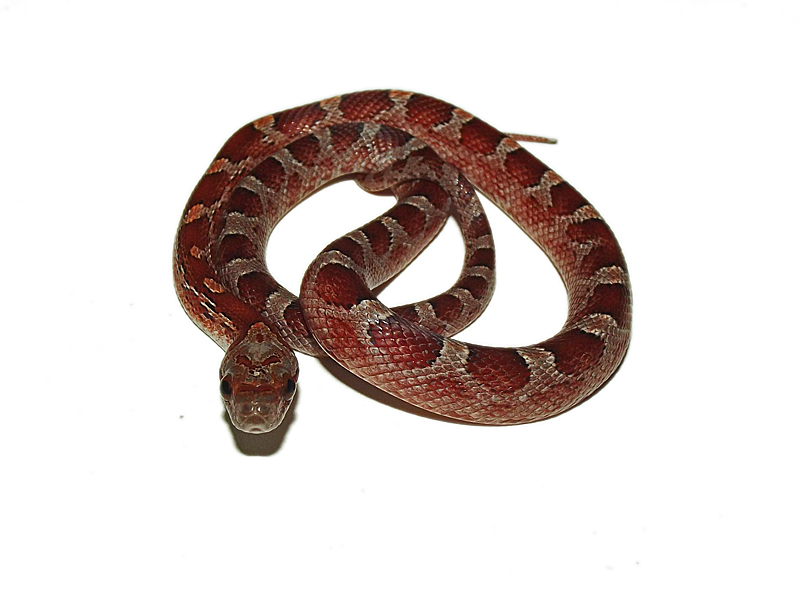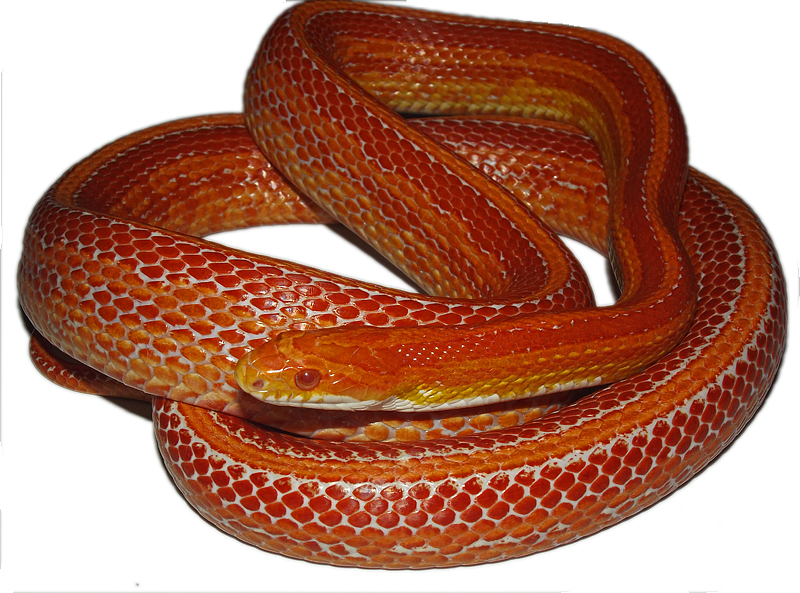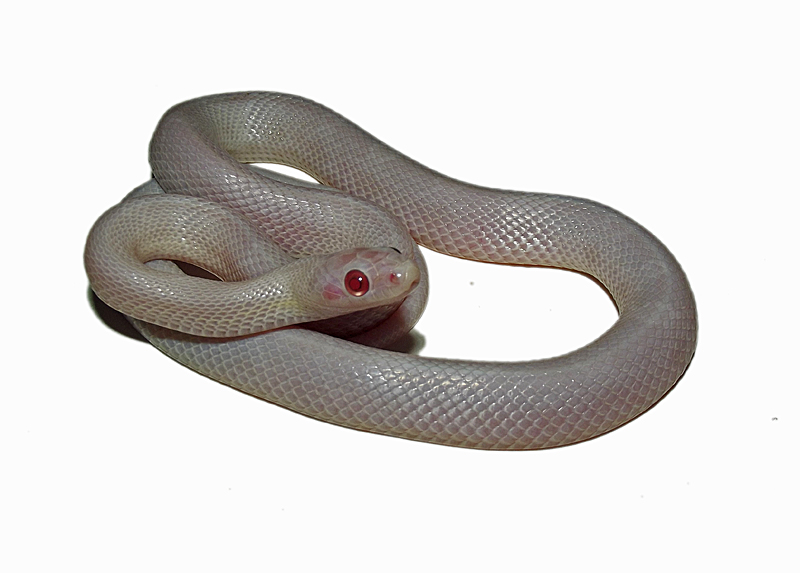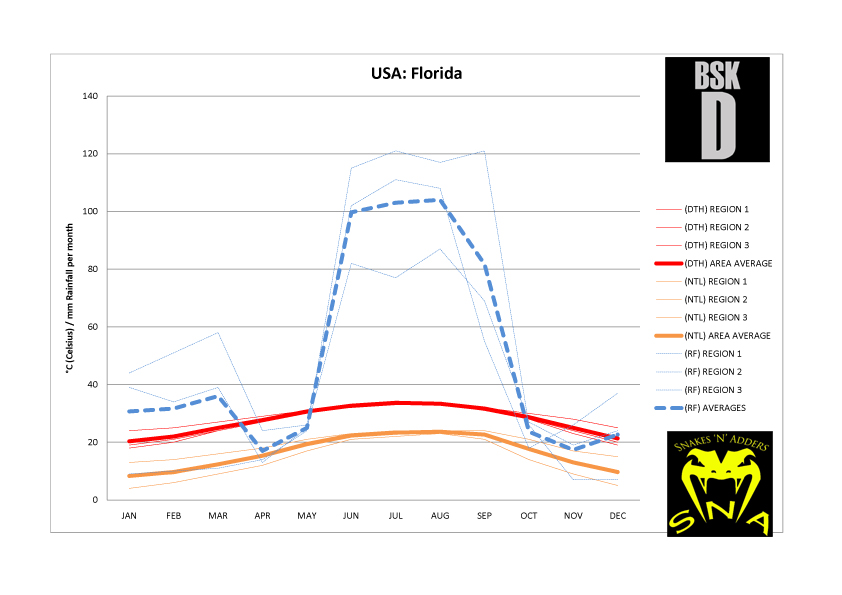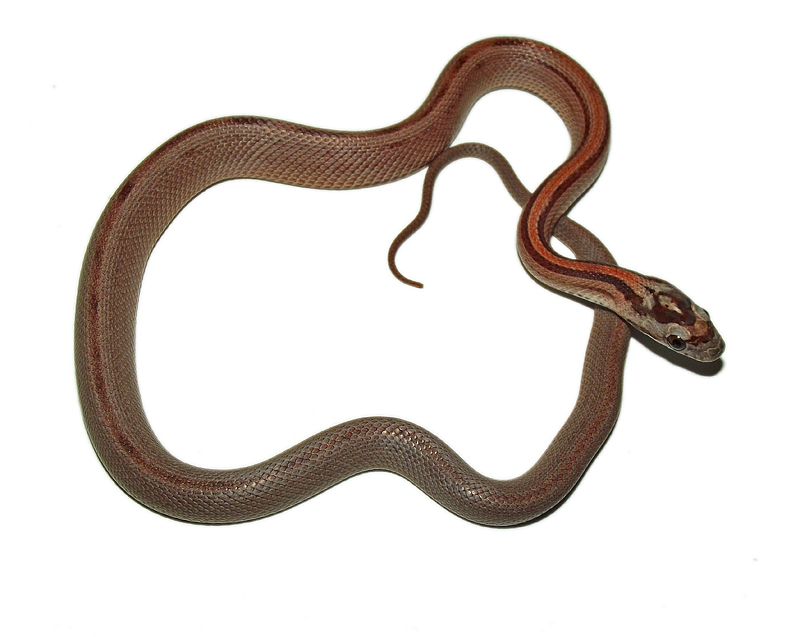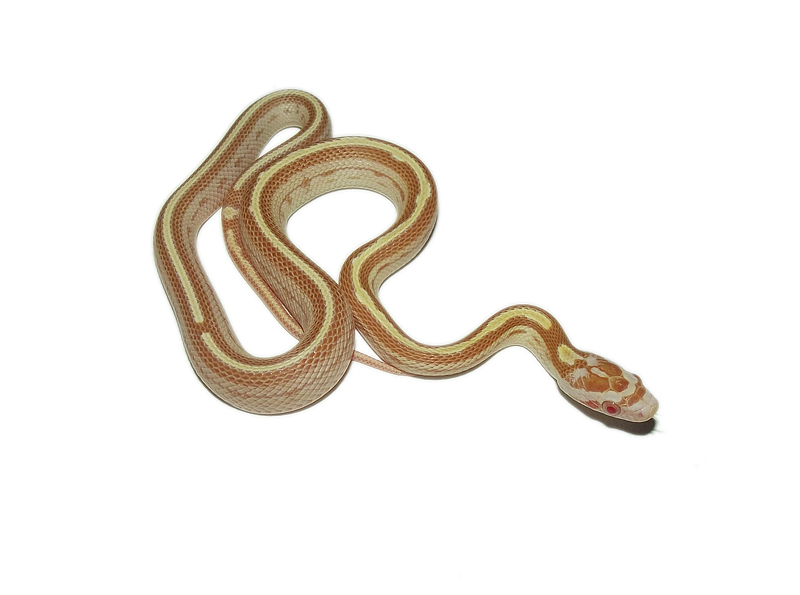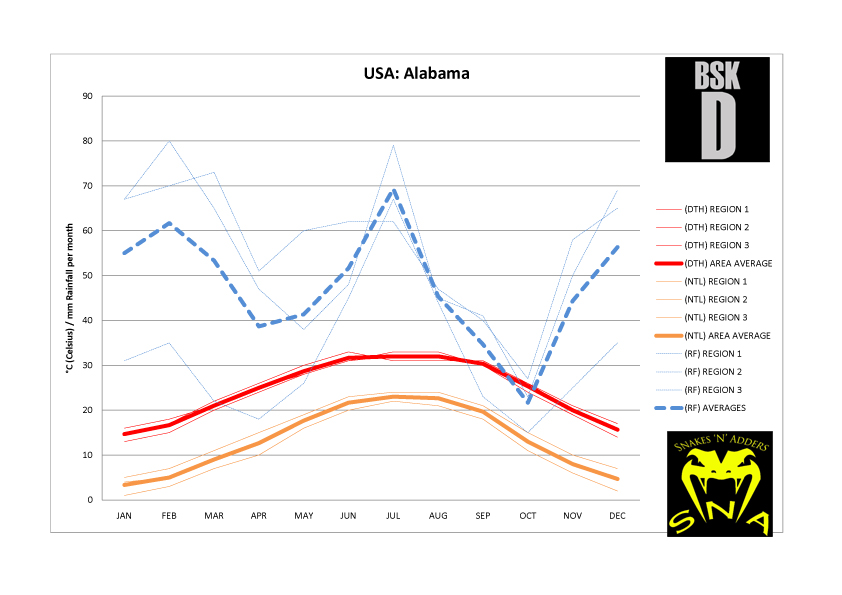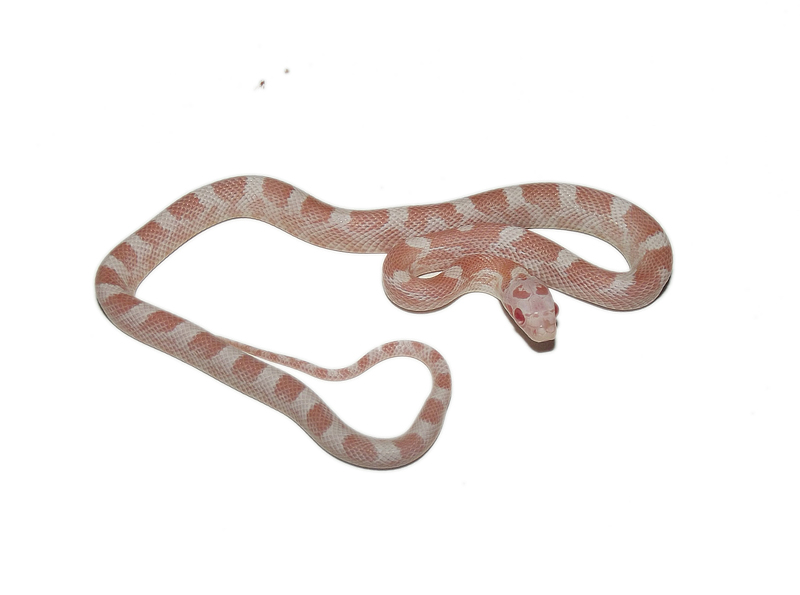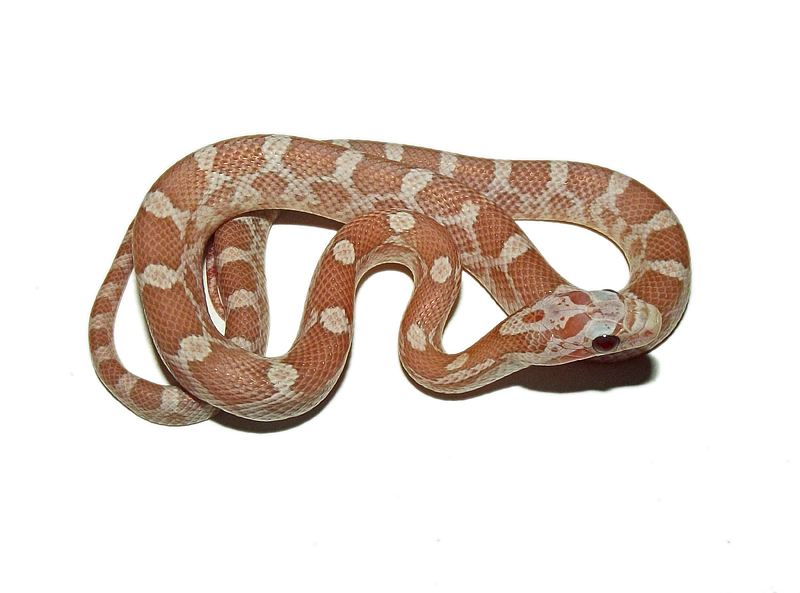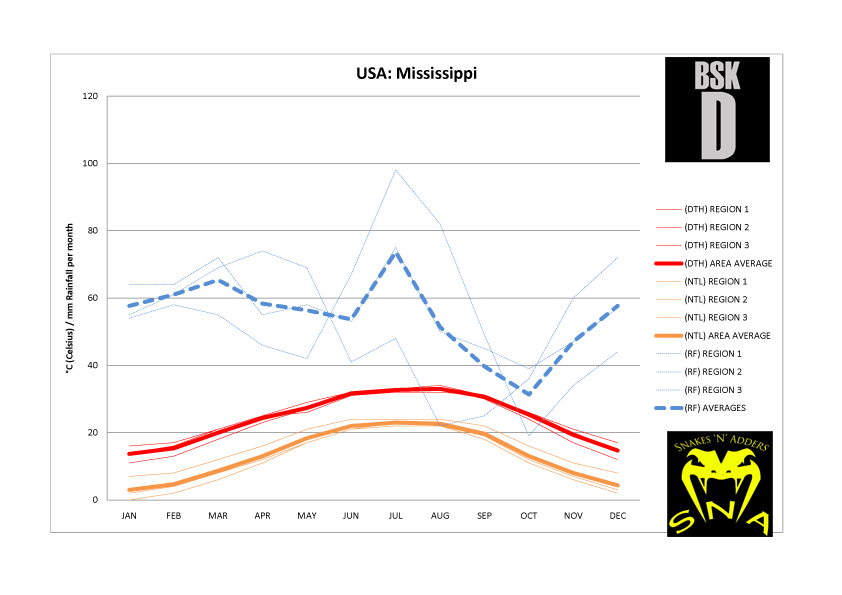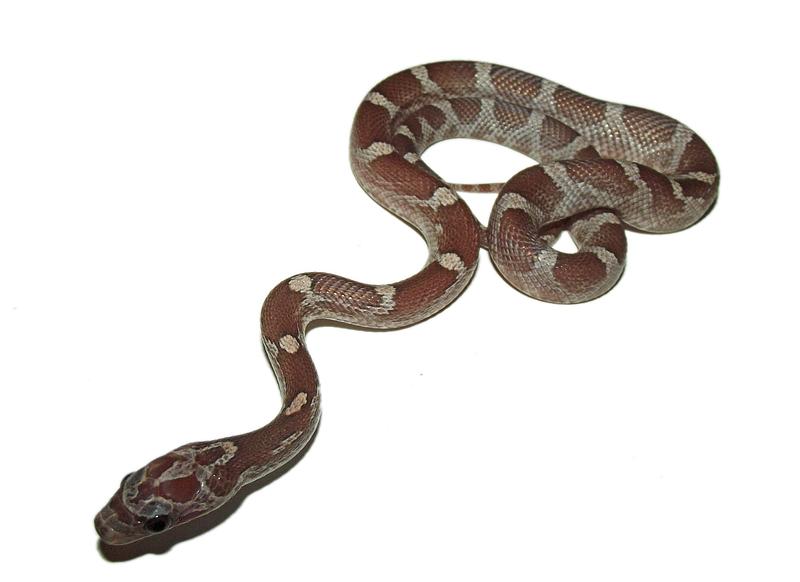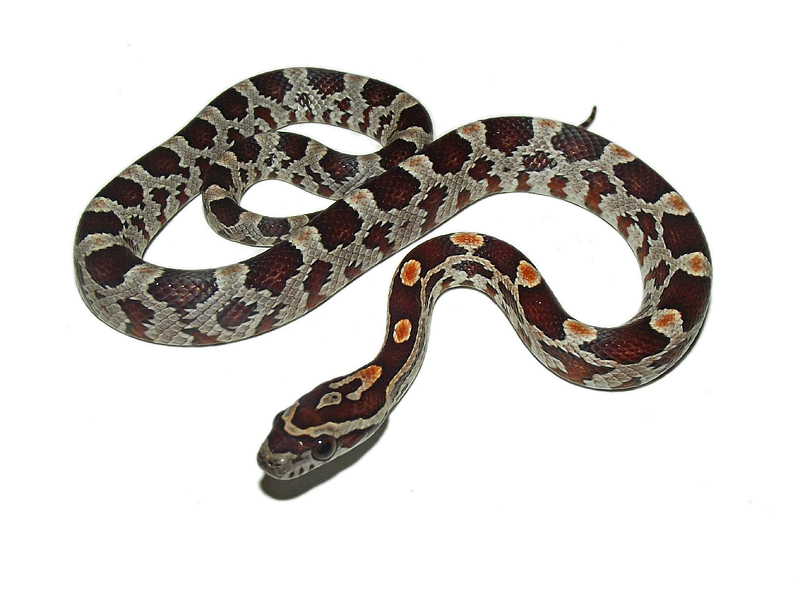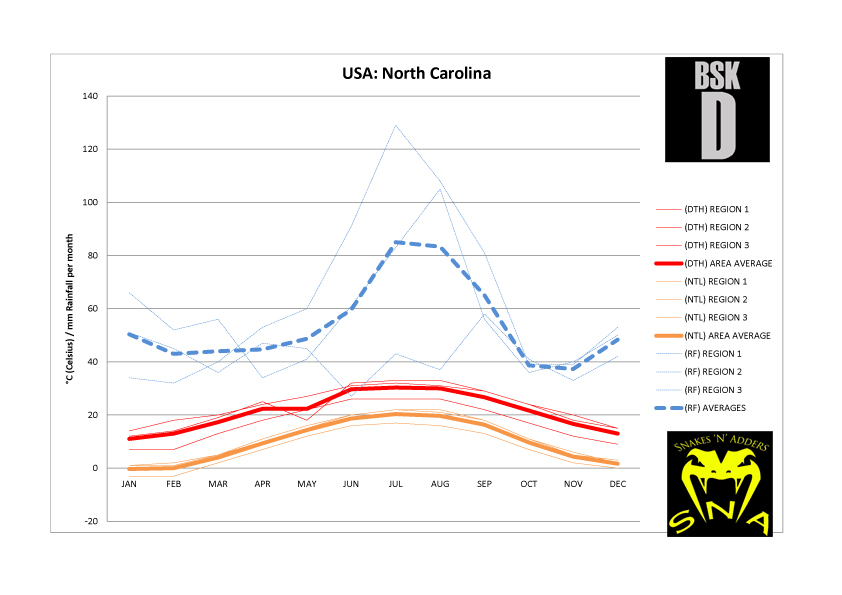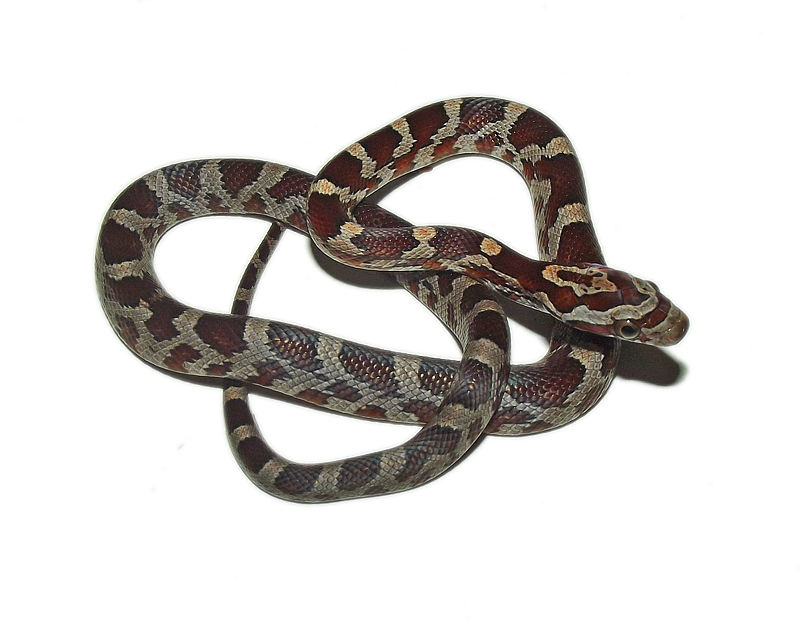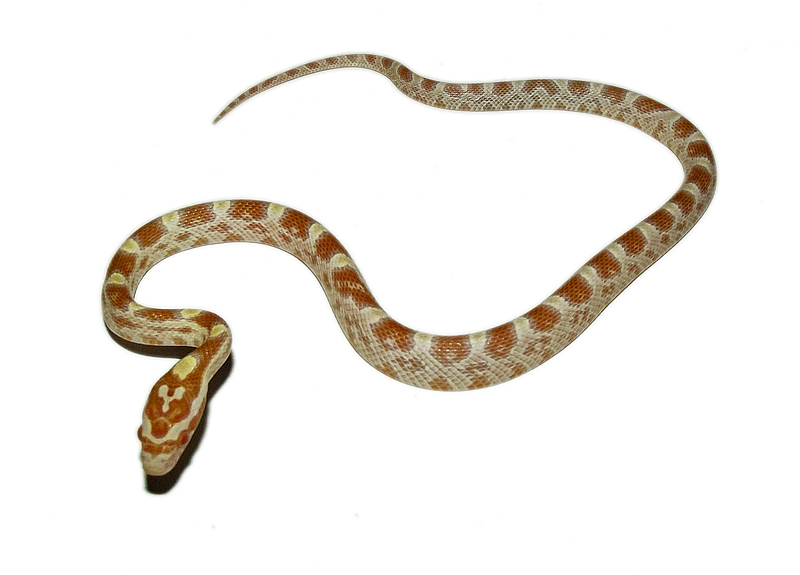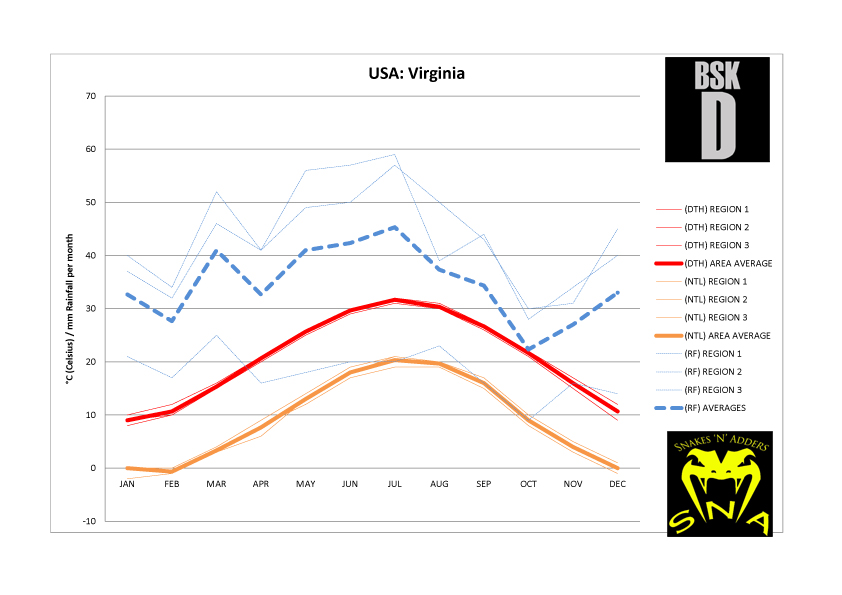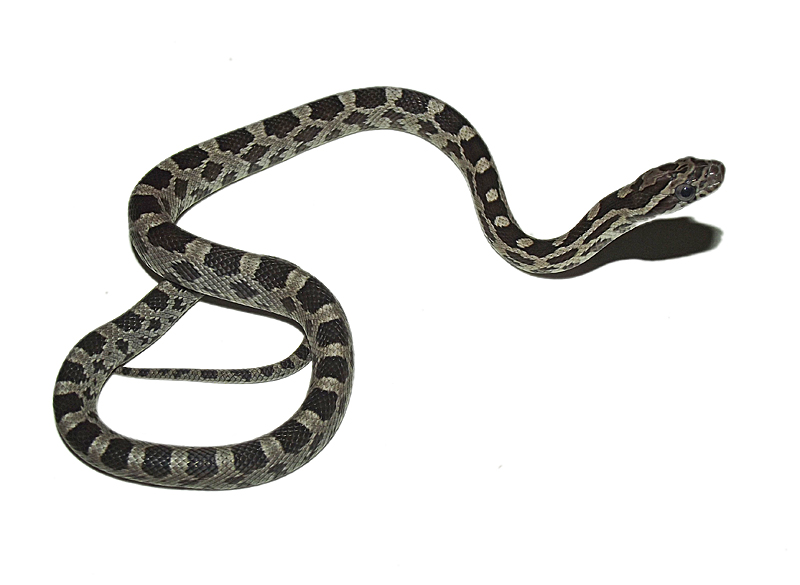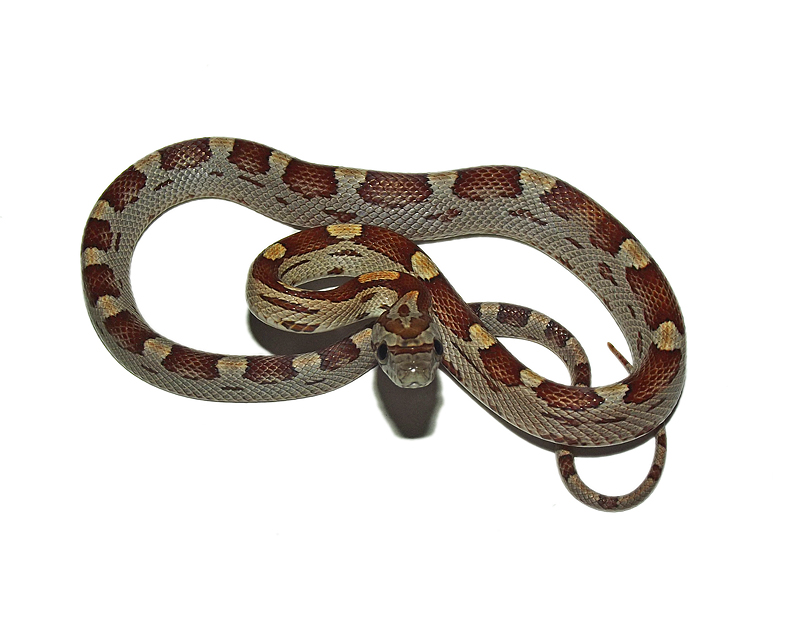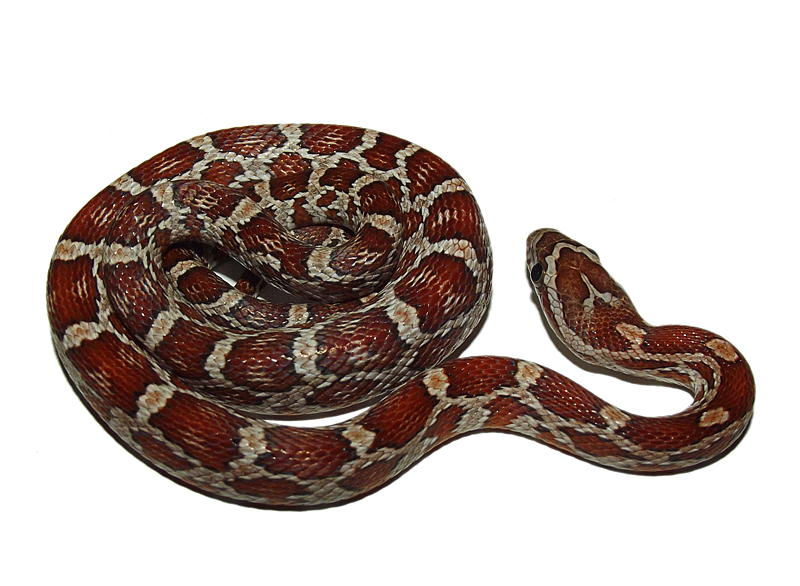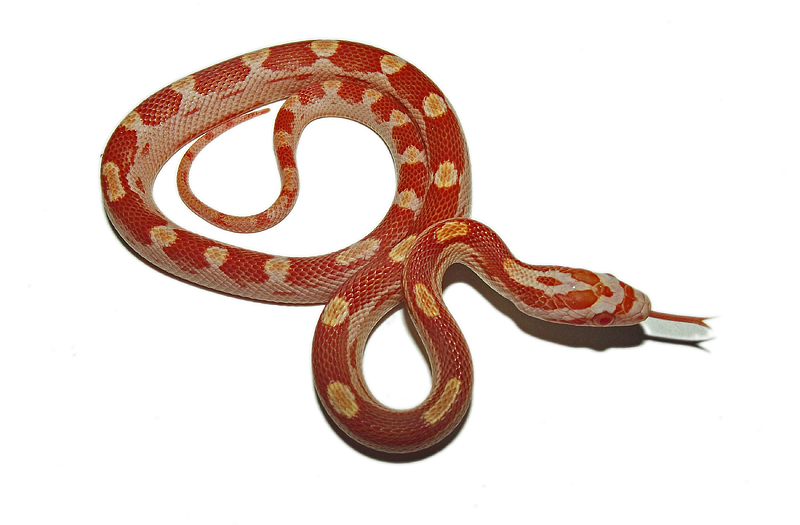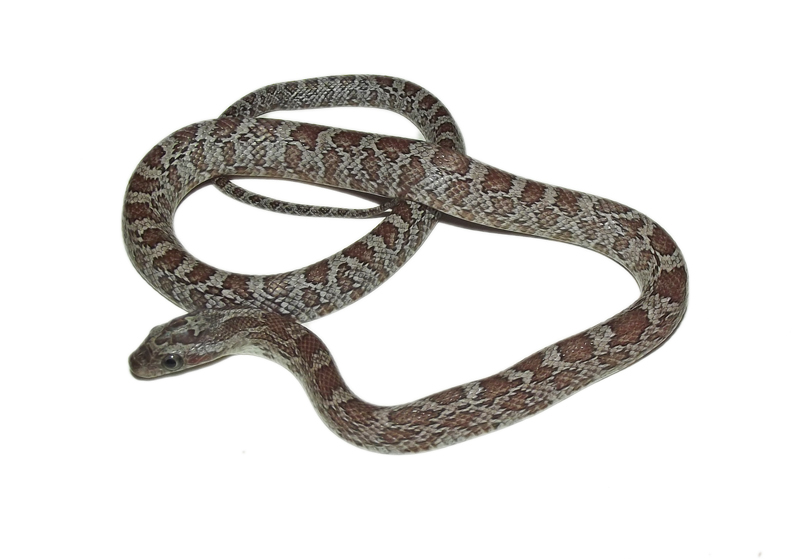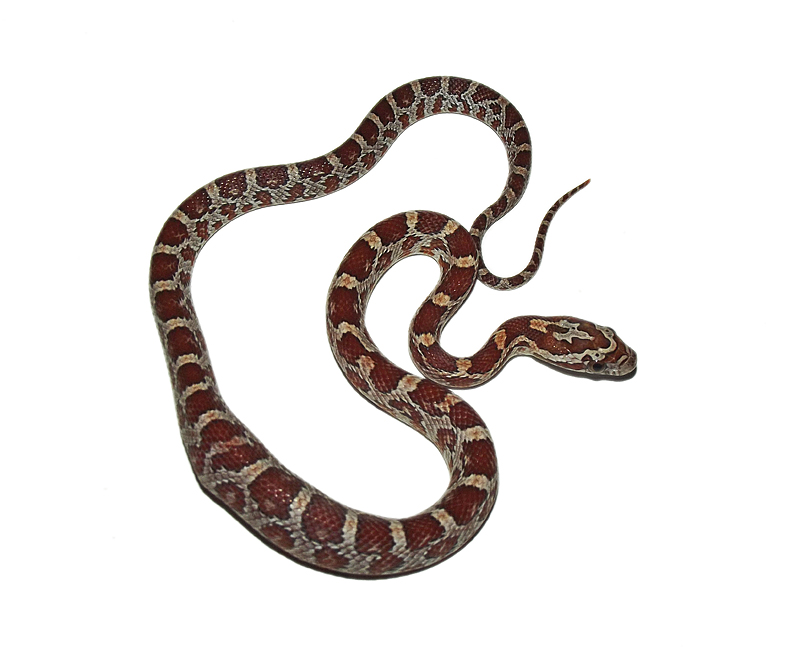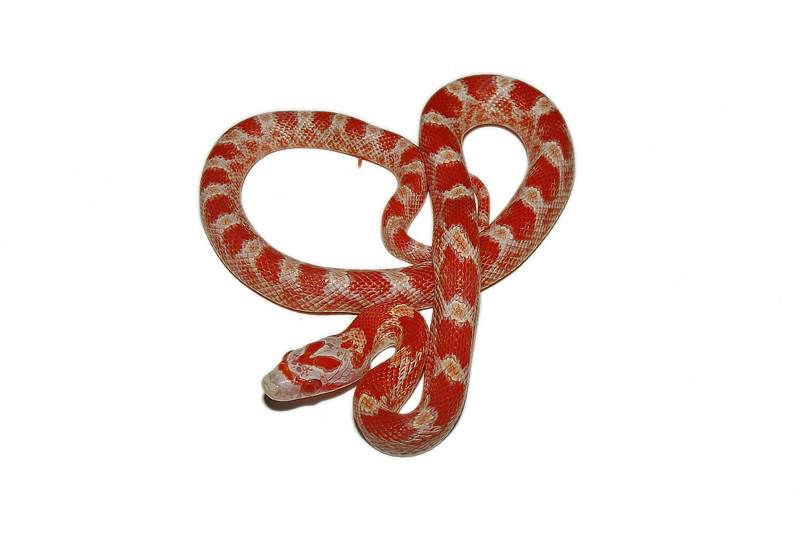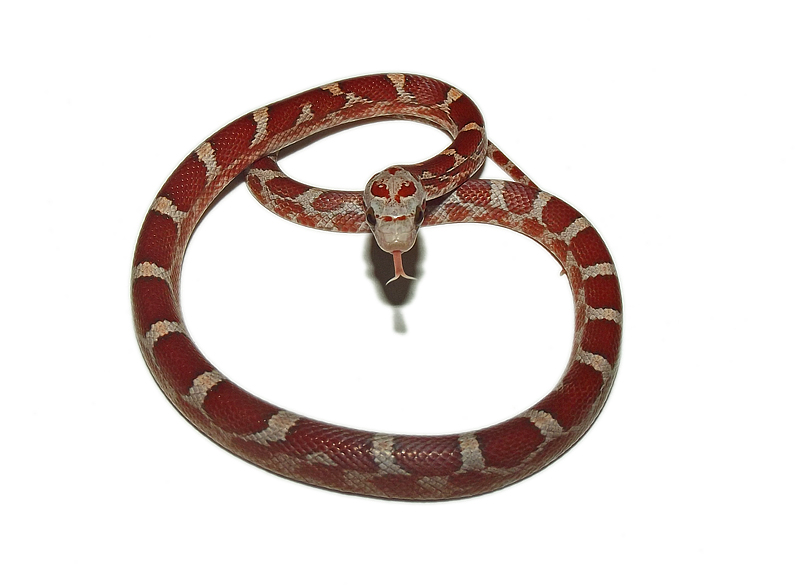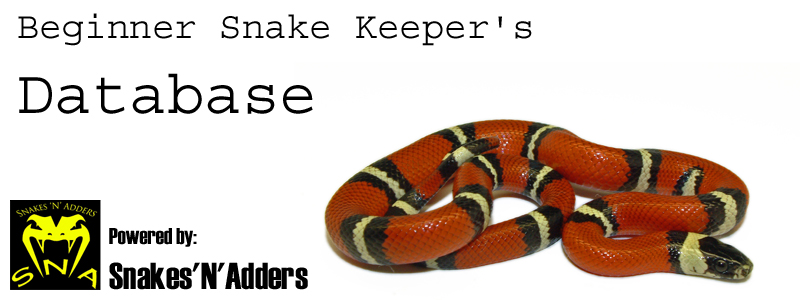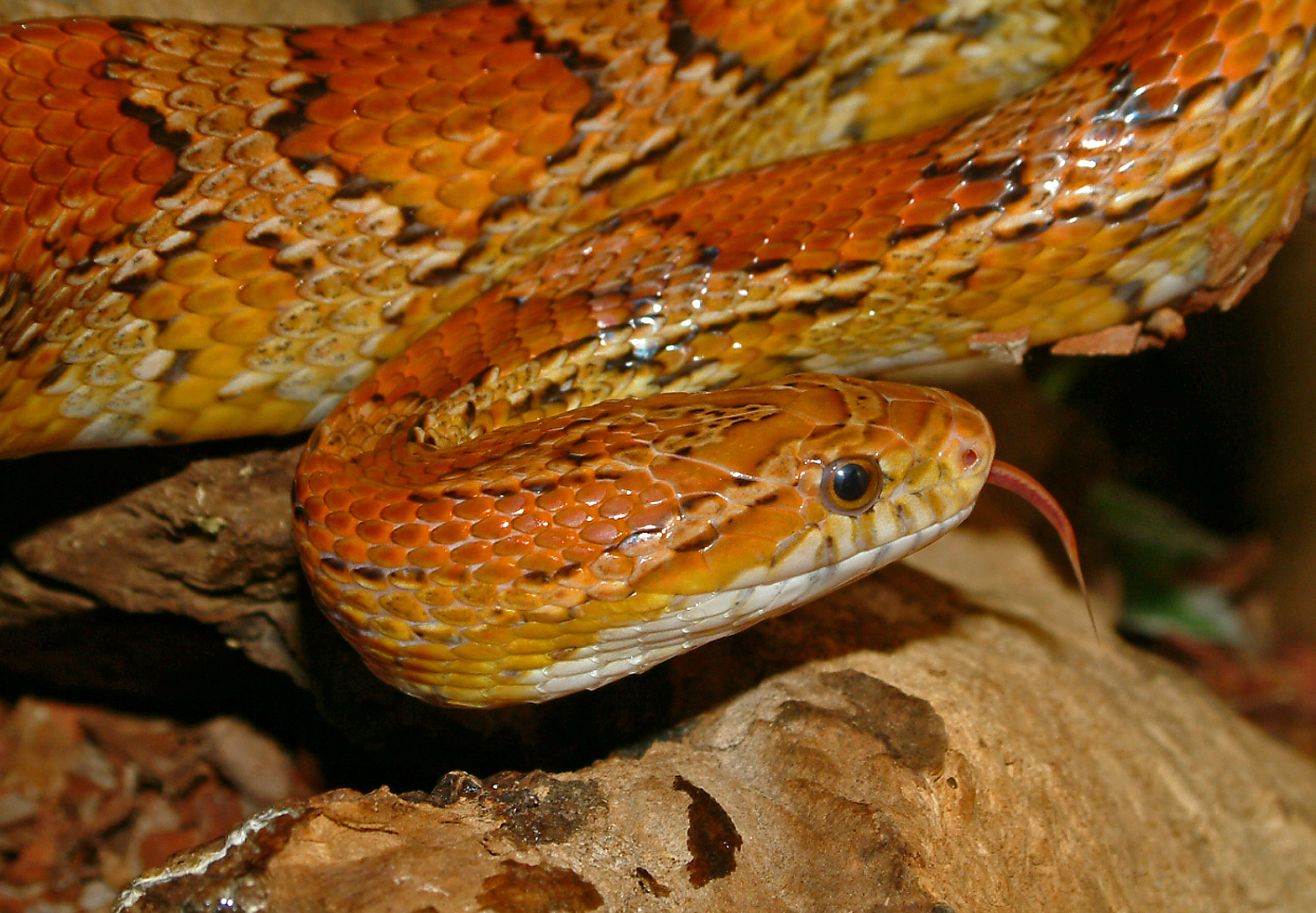
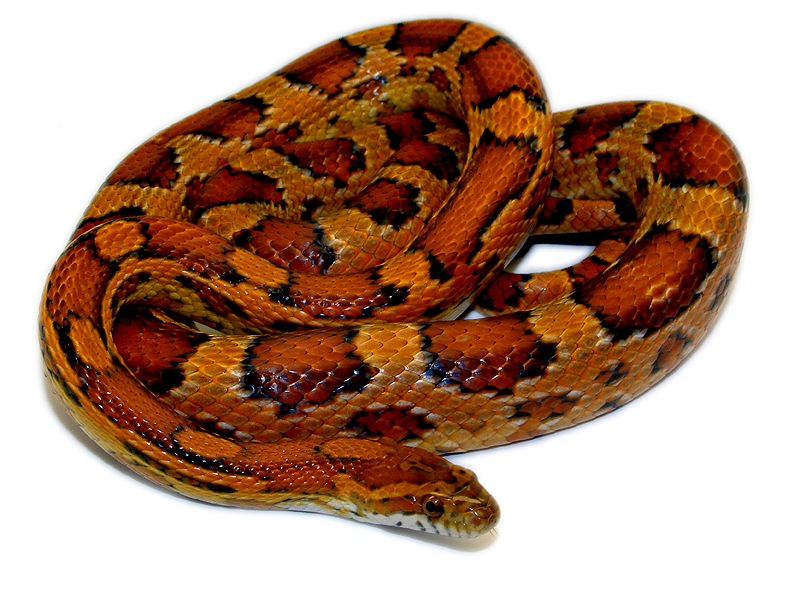
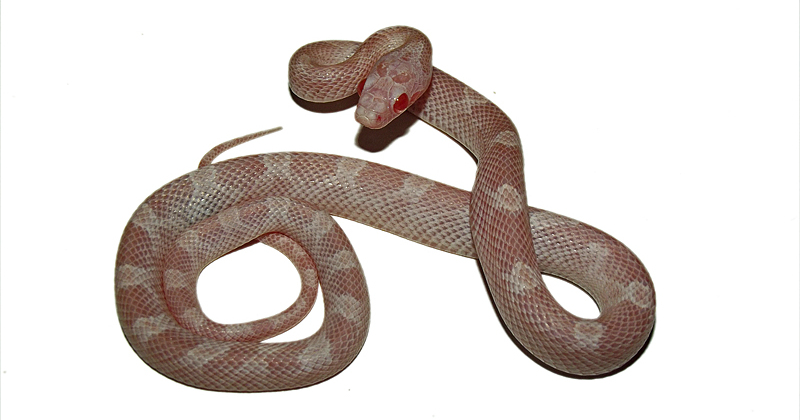
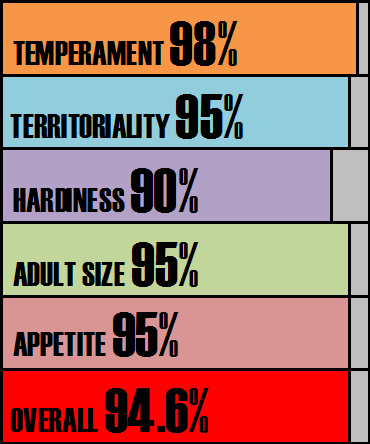
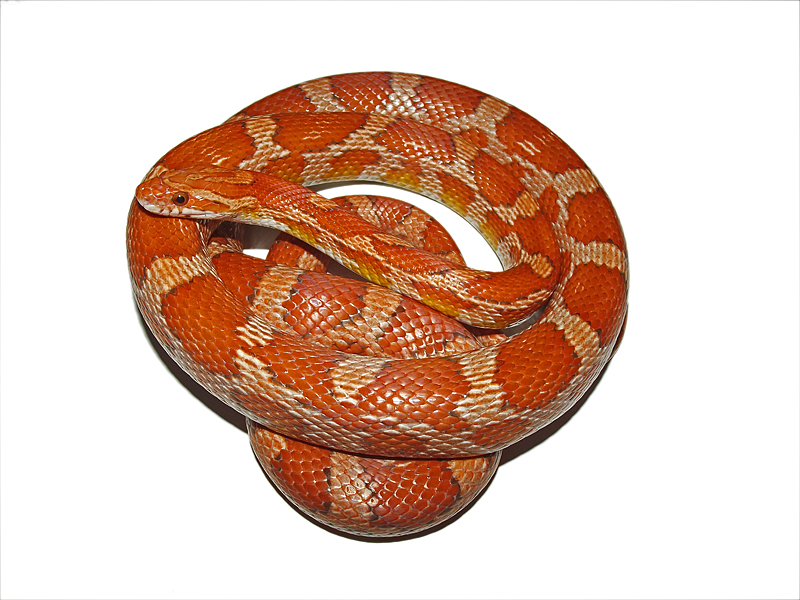

Species Notes based on experiences:
As much as I didn’t want the Corn Snake to be the best Snake to keep in captivity. When objectively scored using the criteria set it wins, hands down. Corn Snakes are the least temperamental, territorial tough as old boots or appropriate size with a great appetite. They come in a plethora of colour mutations. You can almost match them to your curtains their colour palette is so varied. As much as I personally covet the rarer or more obscure beginner species of snake; Corn Snakes are the species I have had the most experience with. In truth they have developed more skills than any other snake (such as feeding reluctant babies and the techniques used) in me as a keeper. It pains me to admit this but it is the truth. The shop has raised in excess of 5-6000 babies as a conservative estimate over the last 20 years. Exposure to these numbers throws up all kinds of issues we have had to work around and learn from; some successes and some tragic losses. It has all been a learning curve. This species is the best snake to keep as a rank beginner. Part of me wishes it wasn’t but it is the truth. This species and the genetics explosion within the species singlehandedly ended the keeping of many other wonderful snakes as keepers pursued exciting new Corn Snake colour mutations. Really I have to admit that human avarice is not the fault of this wonderful little snake.
Score analysis:
When considering temperament, this is the highest scoring snake on the entire website. 98% of the time Corn Snakes are totally tame and totally dependable snake perfectly suited to children as a first reptile pet. As an ambassador for snake species in captivity Corn Snakes have given more people their first interaction with snakes than any other species. They nearly always behave well and infect a new generation with their wonderful personalities. This hobby owes a huge debt to this species for being responsible in kick starting many keepers obsession with this wonderful group of animals.
Territory issues are nearly always more prevalent than true temperament issues. This is an alert snake that can be easily startled. Once startled they may dart away from your hand or rattle their tail in frustration. Biting and the rearing up seen in other North American Rat Snakes is rarely encountered. Once out of the enclosure most if not all defensive behaviours will abate.
When considering hardiness there are two elements to discuss. Their natural locality is somewhat cosseted compared to other temperate snakes. Florida rarely experiences the depth and harshness of the winters or the Northern and Western states. Average night time low temperatures in winter rarely dip below freezing and day time highs remain around 20°c allowing activity (albeit in a limited capacity) throughout the year. In captivity however this species has proven to be one of the toughest and most forgiving of snakes. More keepers have learned their ‘trade’ with this species than any other. More faux pas in husbandry and erroneous choices have been survived by more Corn Snakes than any other. It therefore feels slightly miserly to only score it 90%.
This can be a considerable snake. This is usually as a result of over feeding. Corn Snakes are slender and agile snakes that usually remain between 3.5-4.5ft (105-135cm). Exceptional examples do occur and the record size is a little in excess of 6ft. This snake does not feel delicate like some of the smaller species listed here and is robust enough for the keeper to feel comfortable. When coupled with their confidence and inquisitive nature the size and strength of the Corn Snake are perfectly manageable and will provide most if not all keepers with a positive experience.
Corn Snakes are great feeders, exceptions to this are rare. Generally they start feeding quickly after birth. The majority of babies will have kicked in feeding within a month of birth. Stragglers often catch up only a matter of weeks later. They grow well and accept mice with gusto. They do feed to well though if given the chance and as a result obesity is all too common. Resist the temptation to overfeed.
Tub:
50ltr but largest specimens will benefit from living in a proper vivarium
Vivarium:
90cm x 45cm x 45cm
Budget rig: -
40cm x 30cm heat pad
On / off thermostat
Digital thermometer to monitor thermostat performance
Warm hide
Cool hide
Water bowl
substrate
Recommended rig (vivarium only): -
150w ceramic heat emitter
Ceramic lamp holder and bracket
Bulb guard
Day night thermostat
Digital thermometer to monitor thermostat performance
Various logs and caves along the thermal gradient
Damp hide
Climbing and exercise branches
Plants and foliage (live or artificial – your choice)
Water bowl
Substrate
UVB light (8w T5 shade dweller 7% kit from Arcadia or equivalent) (optional)
Subterranean section to vivarium for further psychological security (optional)
Climate analysis:
Not as hardy as some other snakes on this website in nature but they have more than adequately adapted to life in captivity. Tough as old boots and the closest thing we have to a domesticated species. A gentle winter brumation will result in an excellent breeding response. Some keepers don’t even bother brumating anymore and have perfectly viable clutches from animals maintained at linear temperatures throughout the year.
Conclusion:
The best pet snake for the beginner. That’s it. Frustrating, predictable and a little boring. But true all the same.
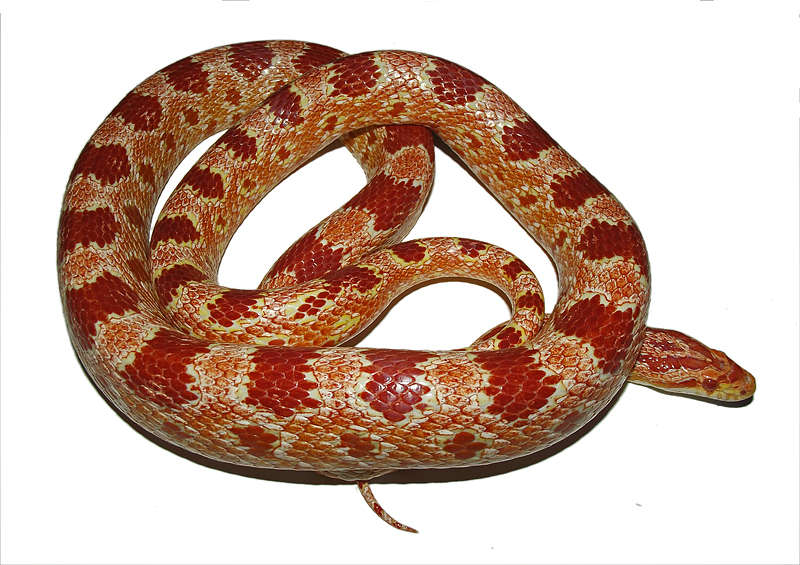
.jpg)
